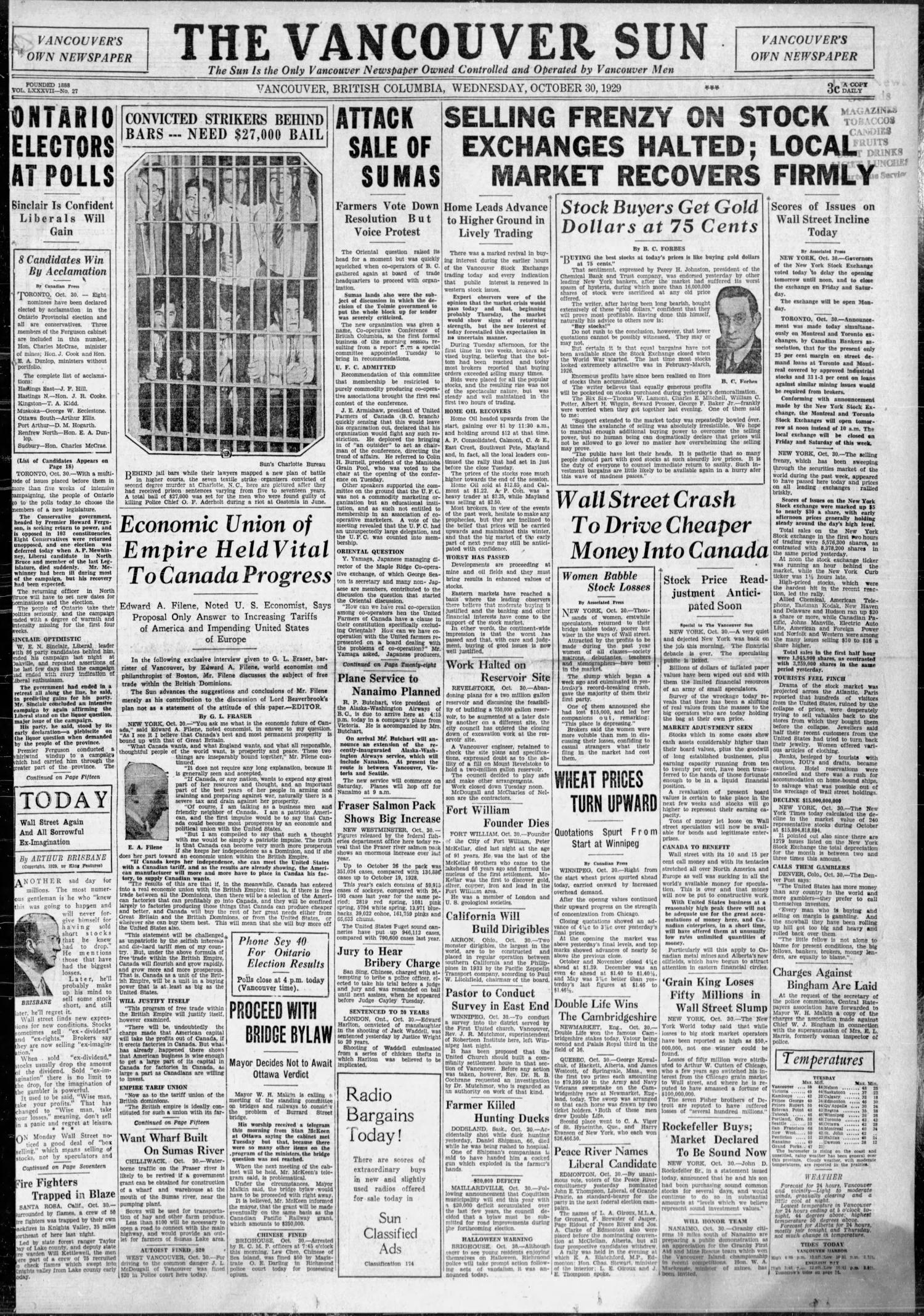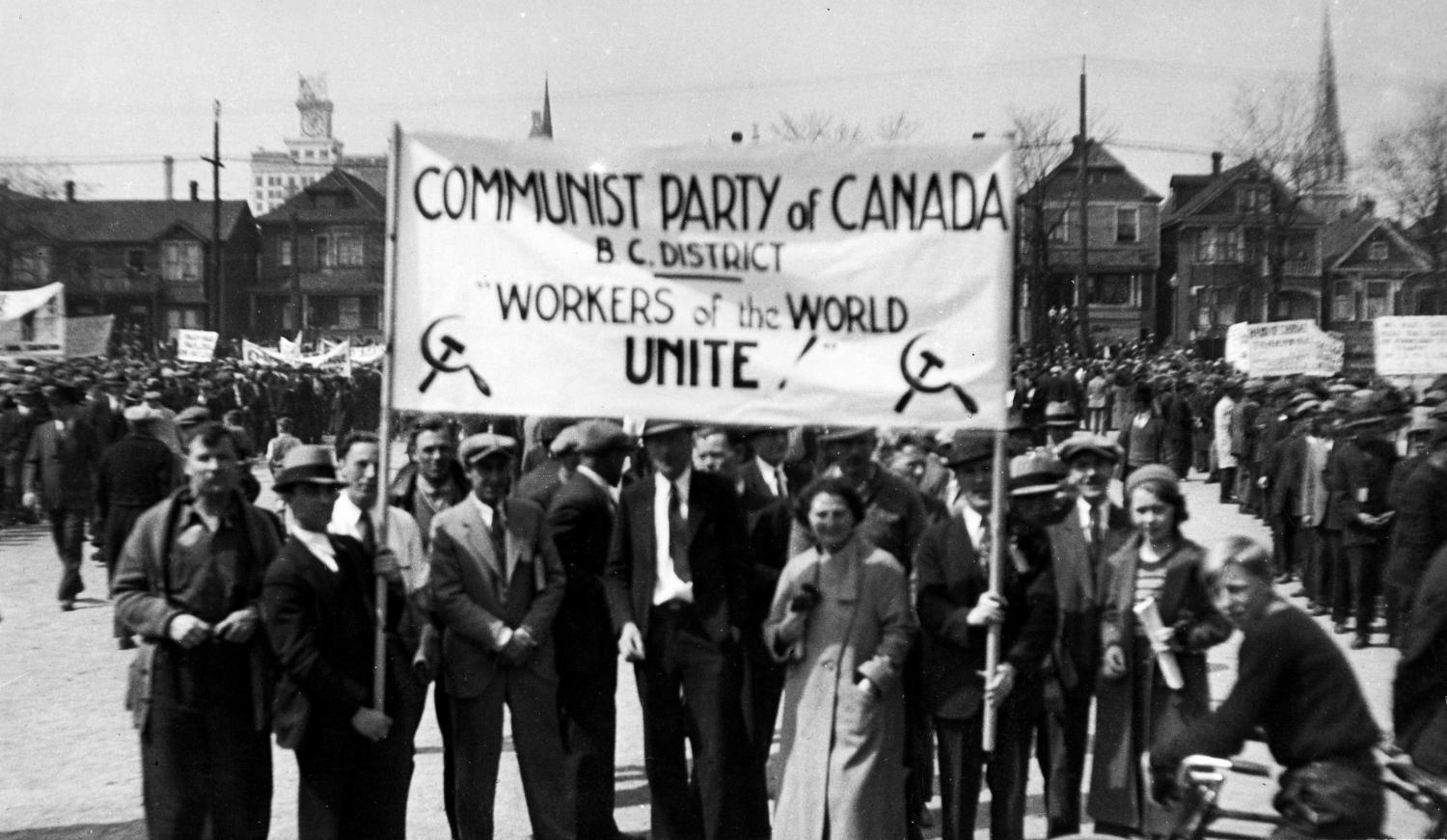The Great Depression
A global financial crisis hits Canada’s West Coast
Date: 1929
There were cracks in the veneer of the Roaring Twenties, if one took a close enough look.
Emboldened by the stock market’s seemingly never-ending growth, wealthy investors in New York City had begun making risky moves. They gambled in stocks and took out loans to finance business expansion that far exceeded the public’s demand. Greater production yielded more incredible wealth, they figured, all the while ignoring the accumulation of unsold wares gathering dust in their storehouses.
Then within a few short days in 1929, the opulent decade came to a sudden end. On Thursday, Oct. 24, anxious investors woke to find that the stock market’s Dow Jones Industrial Average had dropped precipitously. Anxiety turned to panic. By Oct. 29, worries stoked a mass exit by investors. Billions of dollars vanished overnight. But these two days, Black Thursday and Black Tuesday, would prove only the beginning of something much, much bigger.
At first, the crash’s extent was uncertain and thought to be confined to the United States. But as more economies in the West ground to halt, two things became clear: the downturn stemmed from the careless behaviour of New York financiers, and the world’s economies were much more intertwined than previously thought.
Across the continent from North America’s financial capital, British Columbia was hit hard. The global drop in demand delivered a powerful blow to an economy built primarily on export. Logging camps throughout the province depended on transient workers who would make the annual trip out west. These seasonal workers were already on their way to B.C. when the economy took a nosedive. When they couldn’t find employment, the men funnelled into Vancouver, where they found cheap accommodation in flophouses and were greeted with a wealth of distractions, like brothels, vaudeville theatres, and saloons. By 1930, the city had become a “mecca to the unemployed.”
Meanwhile, Ottawa was dragging its feet. No one was certain how long the economic strait would last. Instead of a quick response, the Canadian government seemed to simply cross its fingers, hoping the depression would pass quickly.
Inaction took its toll. Within four years, the gross value of all products manufactured in British Columbia had nearly halved. Meanwhile, the $600 that the average household took home in 1929 had dropped to $353 by 1933 — from nearly $9,000 to a little more than $5,000 in today’s dollars. On top of that, development in the province had nearly halted. In 1929, $54.4 million was spent on construction; in 1932, the figure was a sixth of that, $8.6 million.
The ensuing decade of scarcity and debt rocked Canada’s population. In Vancouver, where unemployment and homelessness had become the new norm, many took to the streets to voice their anger. Economic instability turned to political instability. New parties, such as the Co-operative Commonwealth Federation and Alberta’s Social Credit Party, were formed. Ideologies once considered fringe, such as communism and even fascism, were now being explored. The prosperity and relative stability that had seemed omnipresent just a few years ago now felt like a distant memory. Only in 1939 would B.C. experience any sort of economic relief — sparked by the onset of another global crisis.
Sources:
1. Alan Caswell Collier, Relief Stiff: An Artist's Letters from Depression-Era British Columbia. Edited by Peter Neary, UBC Press, 2018, www.ubcpress.ca/alan-caswell-collier-relief-stiff.
2. Belshaw, John Douglas. “The Great Depression.” Canadian History: Post-Confederation, BC Open Textbook Project, opentextbc.ca/postconfederation/front-matter/about-the-book/.
3. “The End of Optimism? The Great Depression in Europe.” Digital History Reader, Department of History at Virginia Tech University , www.dhr.history.vt.edu/modules/eu/mod04_depression/context.html.
4. Global Impact, 1929-1939. Encyclopedia.com, 30 Mar. 2021, www.encyclopedia.com/education/news-and-education-magazines/global-impact-1929-1939.
5. McCallum, Todd. Hobohemia and the Crucifixion Machine: Rival Images of a New World in 1930s Vancouver. Athabasca University Press, 2014.
6. McMartin, Will. The Great Depression in BC. The Tyee, 26 Nov. 2008, thetyee.ca/Views/2008/11/26/BCDepression/.





